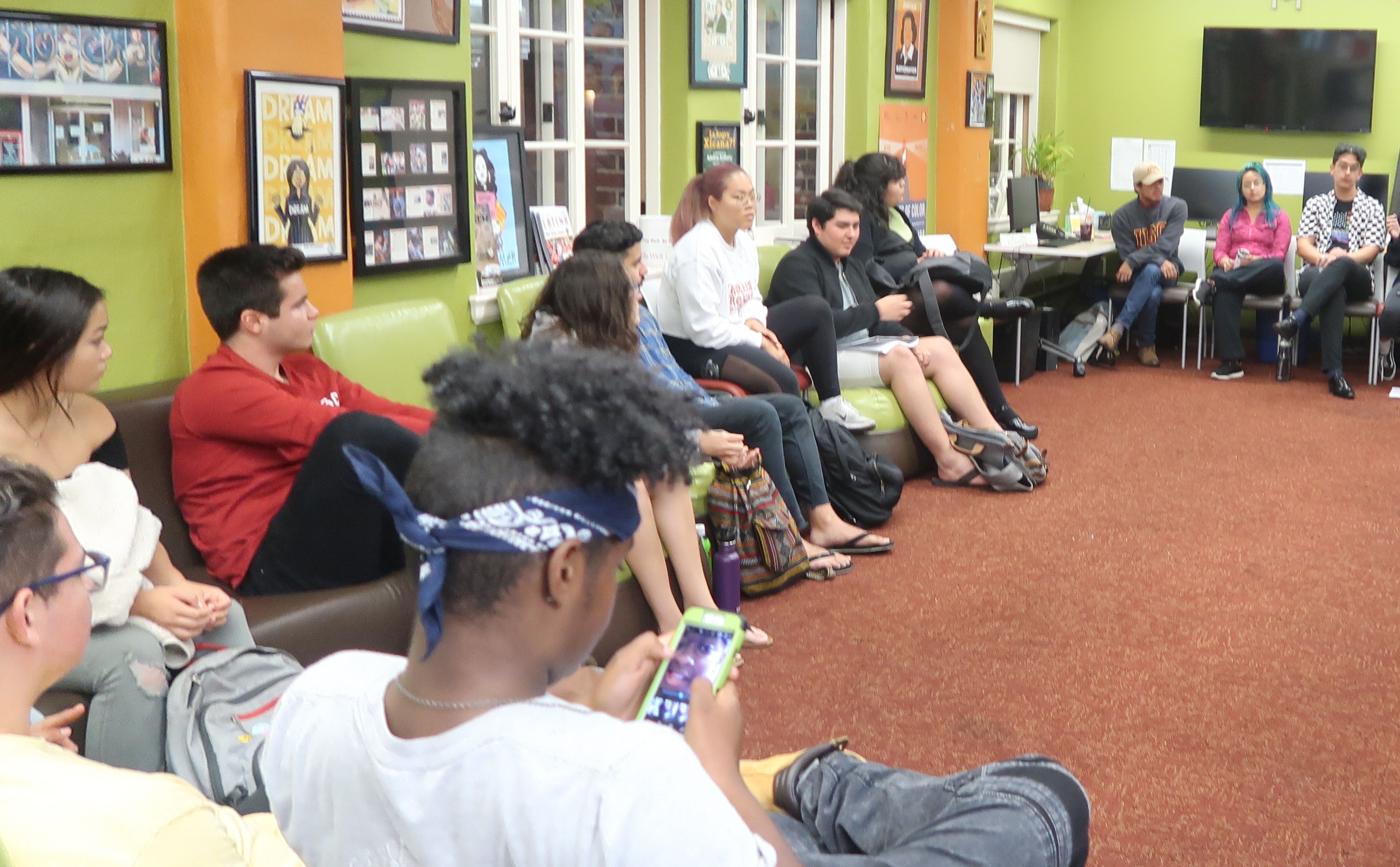Students discuss homophobia among Latinos

A group of LGBTQ Latinx student panelists spoke about the differences between racism and colorism, and addressed the oppressive experiences those with intersectional identities face. (Hyeonmi Shin | Daily Trojan)
The USC LGBT Resource Center and El Centro Chicano joined forces Wednesday evening to host a discussion on homophobia in the Latinx community. The event featured five LGBTQ Latinx student panelists who spoke about their personal experiences.
Around 25 students listened to them discuss topics including deciding when to come out, stereotypes toward Latinos who identify as LGBTQ and the different experiences within the community based on skin color.
“I think USC has a responsibility to take care of its students and by having these conversations. You’re attempting to improve the well-being of these students who are arguably the most vulnerable,” said Eve Cantu, a senior majoring in business administration who attended the event.
Following the panel, attendees asked questions and shared their own stories.
“I grew up in a very Asian majority community, so you never really talked about these things growing up,” said Kristina Chern, a junior majoring in accounting. “It wasn’t really until I got to college that I learned more about the LGBTQ community and panels like these are a really good open space to get a good listen about the topic.”
The discussion also focused on how much of the homophobia and stigmatization of LGBTQ individuals in their community derives from the cultural concept of “machismo” or the sense of being “manly.”
Panelist Alexia Sambrano, a freshman majoring in neuroscience and cognitive science, helped ideate and plan the event.
This semester, all cultural assemblies on campus hosted training sessions for their student staff and encouraged them to think about programs they wanted to execute.
Sambrano works at El Centro Chicano as a special projects assistant and volunteers at the LGBT Resource Center, where she saw a lack of intersectional resources and realized the need for a program to address this.
“One thing I struggled with in high school was coming to terms with it and actually acknowledging that I’m bisexual and learning how to adjust within my community, culturally and in the environment I was in,” Sambrano said. “Having a conversation about this and just sitting and listening can help you tremendously even if you don’t ask any questions — just learning from the experiences can help mold your identity which is what I really wish I would have had.”
Sambrano created the event to in shed light on homophobia within the Latinx community and provide students a safe space to discuss the intersection of sexuality and racial identity. She said Latinx communities have a tendency to sweep such topics under the rug.
“Instead of [having] best of both worlds, it’s like being oppressed from both sides,” Sambrano said.
In addition to shining a spotlight on intersectionality, the event also intended to educate both LGBTQ students and allies, foster a dialogue and further explore cultural and religious causes of homophobia.
“I’m sure that this event will allow for a lot of things to happen,” said William Vela, director of El Centro Chicano. “But obviously more communication, more dialogue and hopefully more Latinx students who identify as LGBTQ feeling included and other students being more aware of our community’s needs.”
